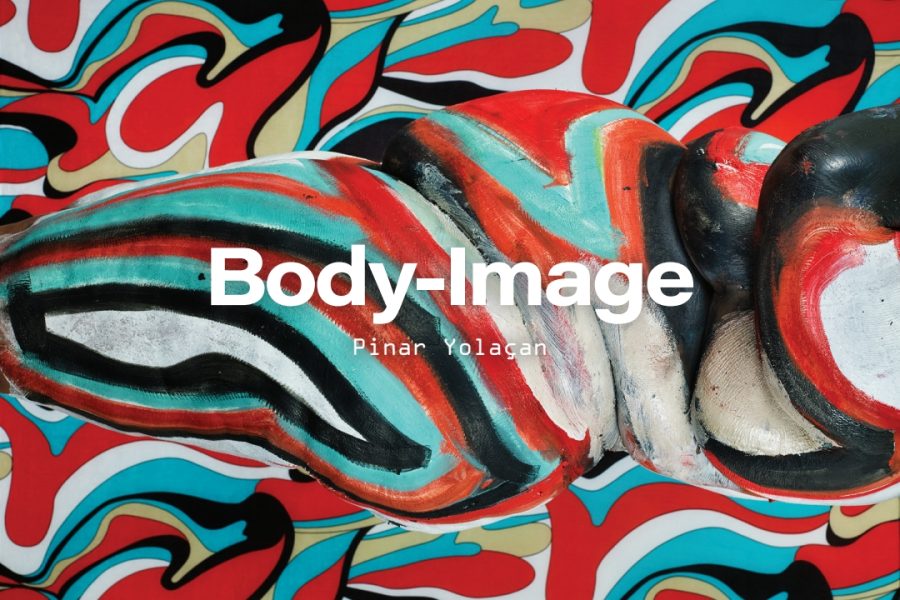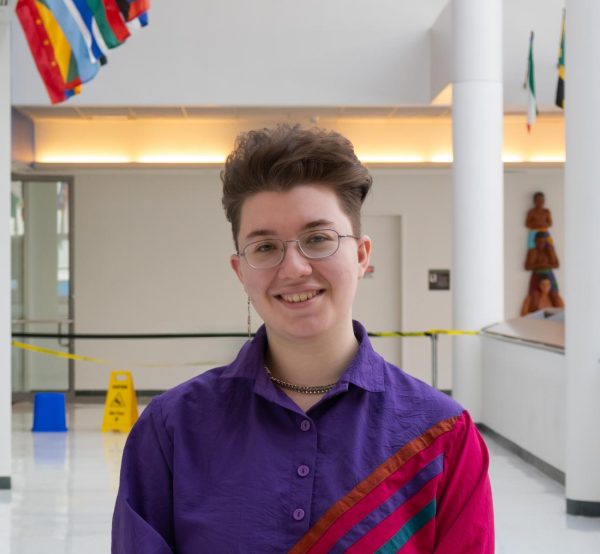NMA new hybrid exhibition focuses on environmental activist Tuire Kayapó
April 29, 2022
A video installation titled “Tuire Kayapó (First Contact)” produced by the Brooklyn-based Turkish-born artist Pinar Yolaçan is now viewable at the New Media Artspace on the second floor of Baruch’s Newman Library.
Riposte Magazine describes the project as “an intimate portrait of Tuire.” She is the female chief of the Kayapó people and has been renowned for her environmental activism in the Brazilian Amazon since the late 1980s.
According to Riposte, the portrait offers “an interesting insight into the process of making something collaborative with respectful intent.”
Yolaçan shared with The Ticker, in an email interview, that the project was inspired by her seeing widely-reproduced images of Tuire with a machete at the 1989 Altamira Gathering.
“We see so many interviews done with royals, celebrities, politicians in the media and yet why with all the tools we have, we are choosing to exclude the Indigenous people from telling their stories?” Yolaçan said.
The interview—which has Chief Tuire’s words in Mẽbêngôkre, the language of the Kayapó people, subtitled in English, Turkish and Portuguese—is also available to watch online as part of Yolaçan’s hybrid exhibition with the New Media Artspace, “Body-Image.”
She enjoyed the experience of being a visiting artist in a teaching exhibition because of the sincere engagement students had with her work.
“Some students said about my video with Tuire Kayapo, they never expected to see a female be a leader in a society that is stereotyped as ‘primitive’ and how it is harder in the US to actually have women in the position of power,” Yolaçan said.
“One student misunderstood the assignment and actually almost wrote an essay which was more thoughtful and in depth than most art reviews I received and read over the years. I just really loved being able to have this connection with them through my work.”
A previous interview with Tuire by Yolaçan has been published in BOMB magazine and Tuire is also a participant of the exhibition in the photo series “The Bricoleur,” which captures the Kayapó tradition of full-body body painting.
Other works by Yolaçan in “Body-Image” include her “Like a Stone” series and her video project “Kathak.”
In “Like a Stone,” the artist solicited models from the fetish sites Big Beautiful Woman and Supersize Big Beautiful Women to cover them in paint, photograph them against flat color backgrounds and crop out their heads.
The resulting images are abstractly sculptural—the human body becomes the metaphorical “stone” of the title, which is also a translation of the Turkish phrase “Taş Gibi” that means, an attractive person. They deliberately call to mind ancient mother goddess figures like the famous “Venus of Willendorf.”
“Kathak” was a video collaboration between Yolaçan and the Kathak dance guru, Abha Auti. Auti is a practitioner of one of the major forms of Indian classical dance and the founder and artistic director of the Laheja School of Performing Arts.
The video shows Auti performing dressed in pink and blue against a background horizontally divided into the same two colors—the rigid visual boundaries around her emphasize the complex, fluid footwork and rhythmic precision that characterizes Kathak.
In an online public lecture on April 5, hosted by both the NMA and the Wasserman Jewish Studies Center, which sponsors the exhibition, Yolaçan gave perspective on her work.
She explained the intention and inspiration behind her art, as well as addressed the Kayapó people’s ongoing resistance to exploitation of their land by the Brazilian government and corporations, including through their engagement with videography that began in the 1980s and has more recently extended to social media.
She was joined by two of her fellow collaborators on “Tuire Kayapó (First Contact)” from Brazil: professor Lucivaldo Costa and professor Katop-Ti Xikrín.
Professor Katherine Behar—the curator of the exhibit—and Milli Encarnacion—a member of the New Media Artspace team—spoke to The Ticker about the process of developing the exhibit.
Yolaçan’s work resonated with Behar because she saw it overlap with her focus of study, object-oriented feminism. She describes it as something that examines how “objecthood is a shared condition of many people, including women, including people of color, including people of different abilities, including people of different socioeconomic classes, and that experience of objecthood unites us with the material world.”
The New Media Artspace will be opening a communal teaching and creative space in the fall and is currently accepting student submissions for its Summer 2022 Docent Pop-up Exhibition, “re:present” with extensions available by request.








